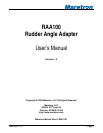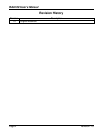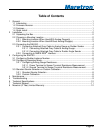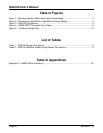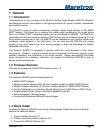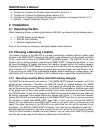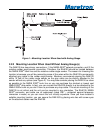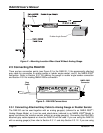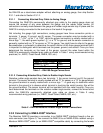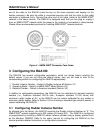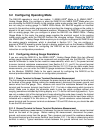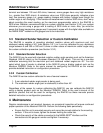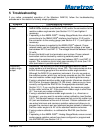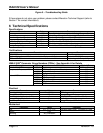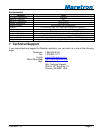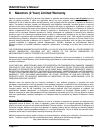
RAA100 User’s Manual
Page 2 Revision 1.0
4. Configure or Program the Rudder Instance Number (Section 3.1)
5. Configure or Program the Operating Mode (Section 3.2)
6. Configure or Program the Resistive Sender type: American or European (Section 3.3.1)
7. Optional – Custom Calibration (Section 3.3.2)
2 Installation
2.1 Unpacking the Box
When unpacking the box containing the Maretron RAA100, you should find the following items.
• 1 - RAA100 Rudder Angle Adapter
• 1 - RAA100 User’s Manual
• 1 - Warranty Registration Card
If any of these items are missing or damaged, please contact Maretron.
2.2 Choosing a Mounting Location
The primary function of the RAA100 is to adapt commercially available resistive rudder angle
senders to an NMEA 2000
®
network so that rudder angle information can be viewed anywhere
on the vessel where there is an NMEA 2000
®
compatible display. The RAA100 can be used
together with an analog gauge(s) (referred to as NMEA 2000
®
/ Analog Gauge Mode), or it can
be used standalone to power and sense the resistive sender without an analog gauge(s)
(referred to as NMEA 2000
®
Mode). If you are using the RAA100 with an analog gauge(s) then
refer to Section 2.2.1 for determining an appropriate mounting location and skip Section 2.2.2.
If you are using the RAA100 as a standalone adapter without attaching an analog gauge, then
skip Section 2.2.1 and refer to Section 2.2.2 for determining an appropriate mounting location.
2.2.1 Mounting Location When Used With Analog Gauge(s)
The RAA100 has two primary connections: 1) the NMEA 2000
®
network connection, and 2) the
analog gauge connection. Therefore, the RAA100 should be located between the NMEA
2000
®
trunk line and the analog gauge(s). The reason for choosing this location is because
you will be connecting some of the wires within the RAA100’s permanently attached gray cable
to the gauge and not the actual sender located at the rudder. Maretron recommends placing
the RAA100 within 15 feet of the gauge so the RAA100’s permanently attached gray cable can
be directly connected to the gauge without any splices (see Figure 1). You may also consider
placing the RAA100 as close as possible to the NMEA 2000
®
trunk line so you can purchase
the shortest or lowest cost NMEA 2000
®
drop cable. In fact, you can connect the RAA100
directly to a tee attached to the NMEA 2000
®
trunk so you don’t have to purchase any drop
cable. The actual mounting of the RAA100 is not critical and the unit can be mounted in any
orientation. The RAA100, NMEA 2000
®
connector, and cable are all waterproof (rated IP67 –
protected against temporary immersion in water) so you can mount the unit virtually anywhere.
Once you have located a suitable mounting location, you can secure the RAA100 by placing
wire ties with screw eyes on the attached cables next to the RAA100.



